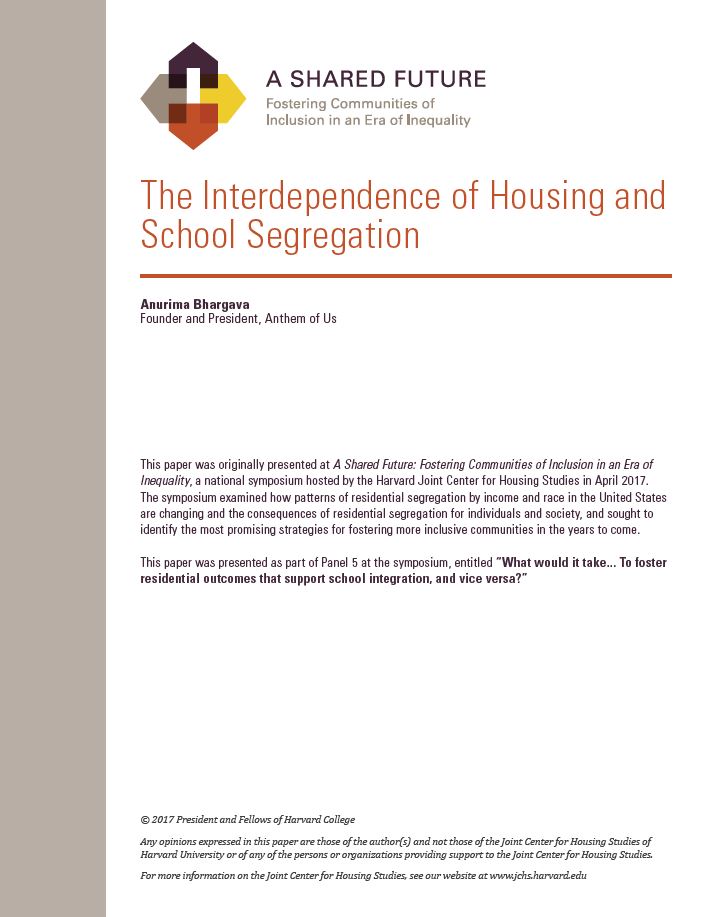A Shared Future: The Interdependence of Housing and School Segregation
This paper provides an overview of the ways in which "housing and education in America have long been inextricably and intricately linked." Most notably, because of the longstanding practice of assigning students to their neighborhood school, segregated housing is usually accompanied by segregated schools. Bhargava contends that despite a series of efforts to address key issues, residential and school segregation have long been, and remain, mutually reinforcing forces. Moreover, since funding for schools is often tied to property taxes, racially segregated schools in areas of concentrated poverty often have fewer resources and higher rates of teacher turnover, two factors that undermine the quality of those schools. This, in turn, makes it even harder for those schools to support the large number of lower-income students who experience residential insecurity, which can have a significant impact on both student engagement and educational attainment. This situation, she concludes, is unfortunate because schools could be "an important anchor and catalyst for change to break down the barriers of residential segregation" and, in doing so, be at the forefront of efforts to support healthy and thriving communities, promote democracy, and strengthen America’s future.

